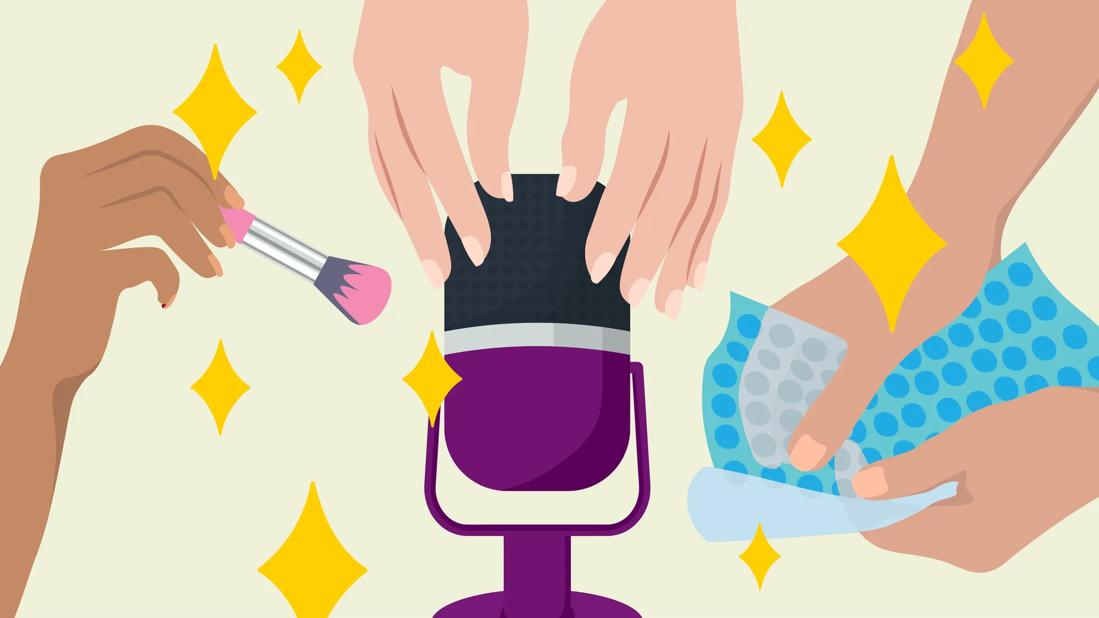Only some people experience autonomous sensory meridian responses, but it can be beneficial to those who do

You’re scrolling social media and stumble on a video. Maybe it’s someone mixing paint or tapping their fingernails. Chewing a hamburger, mouth open, into a microphone. Even pretending to do their taxes on camera.
Advertisement
Cleveland Clinic is a non-profit academic medical center. Advertising on our site helps support our mission. We do not endorse non-Cleveland Clinic products or services. Policy
You’ve strayed into the realm of ASMR. What’s going on here, and who is it aimed at? Psychologist Susan Albers, PsyD, breaks it down.
Autonomous sensory meridian response, or ASMR, is a sensory experience triggered by certain sights, sounds or sensations. It causes a pleasant tingling feeling in your scalp that travels down the back of your neck and throughout your body.
Like getting chills or goosebumps, an ASMR response is involuntary. It’s sometimes referred to as a “brain massage” or even a “brain orgasm,” though most ASMR fans consider the feeling soothing rather than sexual.
“What’s interesting about ASMR is that it makes people feel both relaxed and excited at the same time,” Dr. Albers says. “It’s a paradoxical reaction.”
So, what causes this phenomenon? Scientists still aren’t sure. The working theory is that it triggers specific regions of the brain associated with relaxation. A 2018 study found that this type of content lit up regions connected to reward and emotional arousal.
It also releases feel-good chemical messengers called neurotransmitters:
Advertisement
Dr. Albers says ASMR even changes your brain waves. Specifically, it increases the strength of your theta waves, which also tend to go up when you’re focused or engaged in mindfulness exercises like meditation or prayer.
While it’s a deeply personal experience, research suggests some triggers are more popular than others. A 2018 study shared a list of actions identified as possible triggers. They were, in order of popularity:
As the list shows, not all kinds of ASMR stimuli are sound-based. Other common types of triggers are:
ASMR videos often include binaural sound — an audio recording technique that provides greater depth of sound. The idea is that when you listen through headphones, the sounds closely mimic real-life interactions.
“There’s a lot of trial and error,” Dr. Albers notes. “Certain sounds and sensations are pleasurable to certain people and not to others. So, you have to find the stimuli — if any — that you particularly respond to.”
Only an estimated 10% to 20% of the population experiences ASMR. And research has shown some common characteristics of people who experience the phenomenon.
“A 2022 study found that people who have this sense tend to score higher than average on the personality traits of openness and neuroticism,” Dr. Albers points out. “In other words, the more anxious you are, the more likely you may be to have and enjoy the ASMR experience.”
On the other hand, she notes that many people can’t stand this type of content. You may be more likely to find it overstimulating, annoying or even upsetting if you:
Advertisement
ASMR was only identified in 2010, so all research into it is fairly recent. Right now, it isn’t an approved clinical treatment for any physical or mental health disorder, but many people use it to do things like relax and cope with stressful situations. It may:
“Research is still in the beginning phases, but it’s already clear that there’s a reaction happening on a physiological level,” Dr. Albers reports. “Understanding it better could eventually lead to it becoming a clinically recognized treatment for a wide range of medical conditions.”
Advertisement
There are millions of free ASMR videos online that you can explore any time, day or night. But is it safe to do so?
“The upside of ASMR is that there are no negative side effects,” Dr. Albers says. Still, there are a few concerns worth knowing about:
According to Dr. Albers, the only way to know for sure if you can experience ASMR is to try to expose yourself to lots of different triggers.
“If you take the time to uncover your triggers and find creators you enjoy, you may find that ASMR is an easy and entertaining way to build self-care into your daily routine.”
Advertisement
Learn more about our editorial process.
Advertisement

Breathing, exercise, mindfulness and more can help you unwind and step away from your stress

It isn’t a recognized mental health disorder, but research shows that problematic social media use can negatively affect your mental health, self-esteem and sleep

Looking down at your smartphone or computer screen can stress muscles in your neck, shoulders and back

‘Blackout rage gallons’ can lead to dangerous levels of alcohol consumption

Mindful eating, physical activity and quality sleep are just a few ways to protect your kidney function

Different types of yoga poses, meditation and breathwork may help you feel more emotionally balanced

Fans of these trendy ‘mocktails’ claim they combat stress and fatigue, but they’re not your best choice

Stress can cause light, late or nonexistent periods — which may eventually create a hormonal imbalance

The best parenting style balances enforcing rules and showing plenty of love

Tips include cutting back on sugar, focusing on exercise and managing stress

It can be harder to let go when you’ve invested time, energy and emotions — but it might be the healthier choice long term